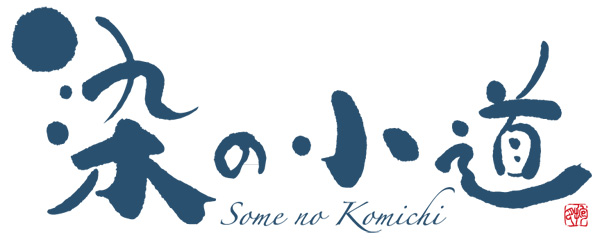月曜日, 2月 14th, 2011...11:43 AM
event: Some no Komichi (Feb 18th-20th)
Reading time: About 3 minutes
event: Some no Komichi (Feb 18th-20th)Japanese dyeing skills were greatly developed within the culture during the Edo period. From the early Showa period to 1950’s, the basin of the Kanda River and the Myoshoji River was known as a focal point of dyeing business, filled with more than 300 dyeing small factories, comparable to that of Kyoto and Kanazawa. Even today in the area around Ochiai and Nakai near Shinjuku, a number of artisans and creators come and see each other to inherit or share the skills from their preceding generations and propose new dyeing techniques. The area’s richness in water and green has also attracted many artists and highly educated people such as Hayashi Fumiko and Akatsuka Fujio.
Some no Komichi is an event aimed to share the culture of Ochiai and Nakai as the “Dyeing Cities” with other areas in Japan and the rest of the world. The whole event is created by the residents of Ochiai and Nakai who wish to share with other people the value and atmosphere of the region. This is the third time being held since 2009, and they will host a “River Gallery” and “Road Gallery” as a new try. In the “River Gallery”, textiles for kimono will be stretched to be placed on the surface of the Myoshoji River while original noren (short curtain hung outside of a shop) will be hung out on 50 shops in the shopping street for the “Road Gallery”. Dyed goods will color up the whole city of Nakai for three days.
As part of the event, visitors may also try to dye or attend a tour at a factory in Nakai. Learning the dyeing skills that have been passed down from the Edo period would be a great experience!
◆The River Gallery –Kimono Textiles on the Myoshoji River-
Dyeing factories on the course of the river and workers washing dyed goods in water were typical features in Ochiai and Nakai until 1950’s. This event is aimed to recall those memories of the city in our own day. 50 to 60 pieces of kimono cloth including colorful ones of Edo Sarasa and Komon, donated by dyeing workers who support the event, will be dancing on the river surface. They will be placed along the path between Myoshojigawa Jisaibashi and Tashobashi. Myoshojigawa Jisaibashi is located in front of Nakai Station on Seibu Shinjuku Line. It will be open from 10 to 5.
◆The Road Gallery –Shopping Street Decorated by Noren-
Skilled creators have dyed more than 50 noren while discussing with shop owners. These noren will brighten the shop fronts.
◆General Information about the Event
Some no Komichi
February 18th (Friday) to 20th (Sunday), 2011
10:00-17:00
near Nakai station (Seibu Shinjuku Line or Toei Ōedo Line) 15mins fron Shinjuku
It is hard to believe that a traditional craft from the Edo period is still deeply rooted in Shinjuku, Tokyo. If you are interested, do visit! You will find great works of tradition.






















Leave a Reply